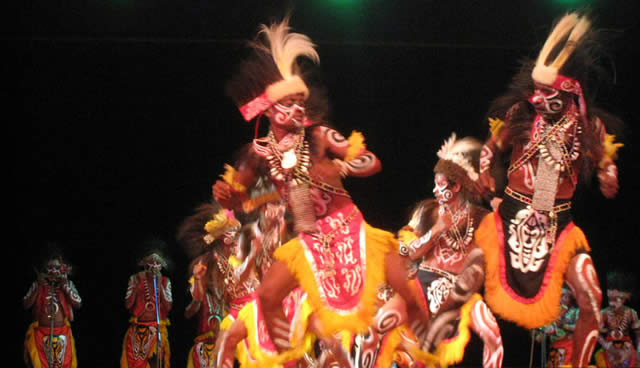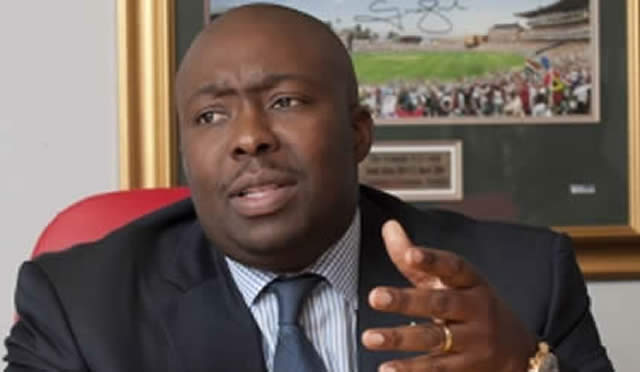INDONESIA THROUGH A CAMERA LENS

Monica Cheru-Mpambawashe Lifestyle Editor—
Cultural film connoisseurs were in for a treat over a three-day period starting on Saturday last weekend as the Indonesian embassy in Zimbabwe hosted screenings of three movies from that country. Even without understanding Indonesian culture and history, one could easily get lost in the stories. The series opened on Saturday evening at Ster Kinekor theatre in Westgate where patrons were treated to a short performance by graceful dancers clad in jewel bright costumes. Ambassador Stephanus Yuwono then officially opened the mini festival with a few words of welcome.
The first film was “Guru Bangsa: Tjokroaminoto”, a docudrama on the life of one of Indonesia’s key liberation heroes. A rendition that compares favourably to similar movies on Malcom X, Martin Luther King Junior and Patrice Lumumba, the story of the much loved hero is universal and transcends all cultures. The choice of film was not a mere coincidence, the ambassador told this writer after the screening. He said the film was selected because it displays how the people of Indonesia and Zimbabwe share so much in spite of being so geographically spaced:
“The ideas of liberation from colonial occupation and the search for equality for all are common to both countries. We also share the ideal of unity. We say ‘Unity in Diversity’ because as a nation we are made up of people from many ethnicities,” said Ambassador Yuwono.
The movie Guru Bangsa: Tjokroaminoto (which literally translates into The nation’s teacher: Tjokroaminoto) tracks the personal and public struggles of the title character as he fights a system in which he himself is from an upper class but still a victim of oppression.
The main character is a member of the privileged locals who are complicit in keeping their fellow countrymen suppressed by the colonising Dutch in exchange for remaining at the top of the native totem pole. But their superiority is a thin veneer which they can only keep with the blessing of the colonial government. When Tjokroaminoto goes against the system he suffers in both his personal life and professionally. He almost loses his wife because her father is afraid of losing his social standing.
The movie also looks at just who can be considered native to a country. Tjokroaminoto is accosted by the question of whether those of mixed ethnicity and the descendants of foreigners can also claim to belong to the land of freedom and equality that he is fighting for.
Unlike most docudramas of heroes, there is no attempt to show Tjokroaminoto as a God-like figure even though he soon gains adulation and veneration from the masses. The director keeps the audience’s sympathy with him as he loses his temper and comes out as less than a perfect husband and father if always a loving and dedicated one.
Emotions are highly engaged throughout with the climax being when Tjokroaminoto’s wife expires in the house behind him while he addresses the people who are looking to him for direction after the colonial government reacts brutally to the fight for freedom.
“I was really touched by the story. I felt that I could relate to all the suffering that the people were going through and the struggle to found a nation in the middle of all that turmoil. The emotional engagement was so high and we definitely need more such high quality movies more often,” said Philomena Wiles, who was one of the people at the screening.
The other two movies were screened at the Old Mutual Theatre at Alliance Francais along Herbert Chitepo on Sunday and Monday evenings.
Filosofi Kopi (Coffee Philosophy) is a story of two friends running a coffee shop who are challenged to make a perfect cup of coffee. Ben and Jody then set out on an adventure and journey of self-discovery in which they must look at their past and present from new perspectives. One of the themes is that of intra-generational communication as the two main characters reassess their relationships with their parents. Naturally the whole plot centres around coffee which is elevated beyond the humble beverage that we assume it to be. After watching the movie one is bound to feel more reverent towards their mug of coffee especially if you are already an aficionado and can tell a genuine Java brew just from one sniff.
The last movie Tabula Rasa takes one on an epicurean adventure of Indonesia as the paths of a humble restaurant owner and a depressed wannabe footballer cross. It is a tale of finding oneself in an unexpected place.
All three movies had great cinematography quality and were superbly directed. Obviously a bit of the essence was lost through translation as subtitles can never quite capture all the nuances of the spoken word.
The Indonesian embassy through an official said they were delighted with the reception of the screenings and hopes that there will be more cross cultural sharing through the arts between Zimbabwe and Indonesia in the future.GEOLOGICAL FACTS
Indonesia is the largest archipelagic state in the world that has 17 508 islands, and it is located between two continents – Asia and Australia/Oceania. This strategic position greatly influences the country’s culture, social, politics and economy.
Stretching along 3 977 miles between the Indian Ocean and the Pacific Ocean, Indonesia has a total area of 1,9 million square miles including the ocean waters. The five large islands of Indonesia are: Sumatera, Java, Kalimantan, Sulawesi and Papua.
There are 400 volcanic mountains – which 100 of them are active – that dot the islands of Indonesia. Every day Indonesia experiences three vibrations, at least one earthquake a day and one volcanic eruption in a year.
DEMOGRAPHY
The population of Indonesia can be divided into two major groups: in the western region most of the people are from the Malay ethnicity while in the eastern region there are the Papuans originating from the Melanesian Islands. Indonesia also recognizes specific ethnic groups that come from a certain province/area and have specific language for example the Javanese from Central or East Java, the Sundanese from West Java or the Batak ethnicity from North Sumatra.
In addition, there are also minority ethnicities derived from Chinese, Indian and Arabic descendents. These people travelled as merchants through trade exchange since the 8th century BC and migrated to Indonesia. Approximately 3 percent of the population is from Chinese ethnicity, although the exact percentage is not known as the last ethnicity census was held in the 1930s.
Islam is the major religion of 85,2 percent of the population, designating Indonesia as the largest Moslem country in the world. The remaining population consists of Protestants (8,9 percent); Catholics (3 percent); Hindus (1,8 percent); Buddhists (0,8 percent) and other religion (0,3 percent).
Indonesian Culture; Arts and
Traditions
Indonesia is culturally rich. Indonesian art and culture are intertwined with religion and age-old traditions from the time of early migrants with Western thoughts brought by Portuguese traders and Dutch colonists. The basic principles which guide life include the concepts of mutual assistance or “gotong royong” and consultations or “musyawarah” to arrive at a consensus or “mufakat” Derived from rural life, this system is still very much in use in community life throughout the country.
Though the legal system is based on the old Dutch penal code, social life as well as the rites of passage are founded on customary or “adat” law which differs from area to area. “Adat” law has a binding impact on Indonesian life and it may be concluded that this law has been instrumental in maintaining equal rights for women in the community. Religious influences on the community are variously evident from island to island.
Language
The official language of Indonesia is ‘Indonesian’ or ‘Bahasa Indonesia’. It’s universally taught in schools and is spoken by nearly every Indonesian in business, politics, national media, education and academia. The Indonesians also speak several hundreds of local languages like ‘bahasa daerah’ as their first language. Javanese is also widely used besides other Papuan or Austronesian languages in a region of just 2,7 million people.
Architecture
Indonesian culture, especially its architecture has been to a great extent dominated and influenced by the Indian, although European influences have also been particularly strong since the nineteenth century. Traditional buildings in Indonesia are built on stilts with oversized saddle roofs which have been the home of the Batak and the Toraja. The Torajan use the buffalo horns, stacked one above another in front of the house as an indication of status. Scenes from the Ramayana adorn the outer walls in different colors. However, Chinese, Arab, and European architectural influences have also been quite significant in Indonesian architecture.
Cuisine
Indonesians distinctive cuisine has been derived from centuries with the influence of the Chinese, European, Middle Eastern and the Indians. The staple food of most Indonesian dishes is rice served with meat and vegetables. Flavors of Vietnamese and Thai food can also be got from the cuisine of Indonesia. Spices, notably chili, and coconut milk are fundamental ingredients in most of the dishes, especially fish and chicken.
Material Art
The arts of Indonesia are many, especially Indonesian paintings which are unique works of art. The intricate and expressive Balinese paintings are quite famous and often express natural scenes and themes from the traditional dances. A long-standing tradition of sculpture can also be seen in the art and culture of Indonesia, some dating back to the Bronze and Iron Ages. Examples of sculpture illustrating the story of the life of Buddha can be seen in the temples of the 8th and the 10th century. Indonesia’s art and culture is also famous for their unique batik, ikat and songket cloth which is even popular today. – www.kemlu.go.id










Comments